Mauritius is an island with an important cultural and spiritual diversity. You can find religious movements there such as Christianism, Islam, Hinduism, etc. and unique places of worship and historical buildings.
There are three places of worship or memory that I choose to show you in this article. What I very much appreciated about these three places is the fact that even if you are not a member of the religious movement or culture, you can still embrace the peace and calm you find there and learn about the history of the religion/building thanks to the available documentation.
In my opinion, worship places also have a calming effect and are the perfect place to reflect on yourself or on anything that requires to have a clear mind. Because of the spiritual and cultural importance of these places it is also important to show respect and humility while entering them and to ask permission before taking pictures or entering a room. Therefore, I decided through these pictures to focus on the architectural beauty of the buildings and their courtyards.
The Kwan Tee Pagoda
The Kwan Tee Pagoda is said to be the most ancient pagoda in Mauritius. It was founded in 1842 by Ahime Choisanne the founder of the Chinese community in Mauritius. It is dedicated to the worship of the historical figure Guan Yu (Kwan Tee 160-220 AD).

“Guan Yu (d. A.D. 219), a warrior of the late Han dynasty (206 B.C.–A.D. 220) renowned for his valor and faithfulness, was later venerated as a saint in the Daoist pantheon. Elevated to the rank of emperor (di) by the Wanli emperor (r. 1573–1620) of the Ming dynasty, Guandi, as he was thenceforth known, served as a virtual patron saint of the Manchu rulers of the Qing dynasty, who erected numerous shrines in his honor throughout China. In this image, Emperor Guan is shown descending from the heavens accompanied by his two attendants. He is identified by an inscription written in gold in the upper right: “Overseer of the Gate, Sage-Emperor Lord Guan.””
https://www.metmuseum.org/art/collection/search/62002
When I visited the pagoda there was nobody there so I sat down on one of the benches in the courtyard which was filled with all sorts of plants. The aesthetic of the Pagoda is amazing and while sitting in the courtyard you are isolated from the city noises.
Even when you don’t find anyone within the Pagoda, there are big signs in the courtyard explaining traditional Chinese cultural practices and symbolism such as “Traditional Auspicious Images in an Elder’s Birthday”, “Tradition of Elder’s Birthday in the Chinese Antiquity” or the setting up of a “Longevity Hall”.
If like me you don’t know much about Chinese Pagodas and related traditional cultural practices, this place will definitely make you want to learn more about it. There is also a library within the Pagoda and the community organizes regular events which are documented on their website.
More information: https://kwanteepagoda.org/
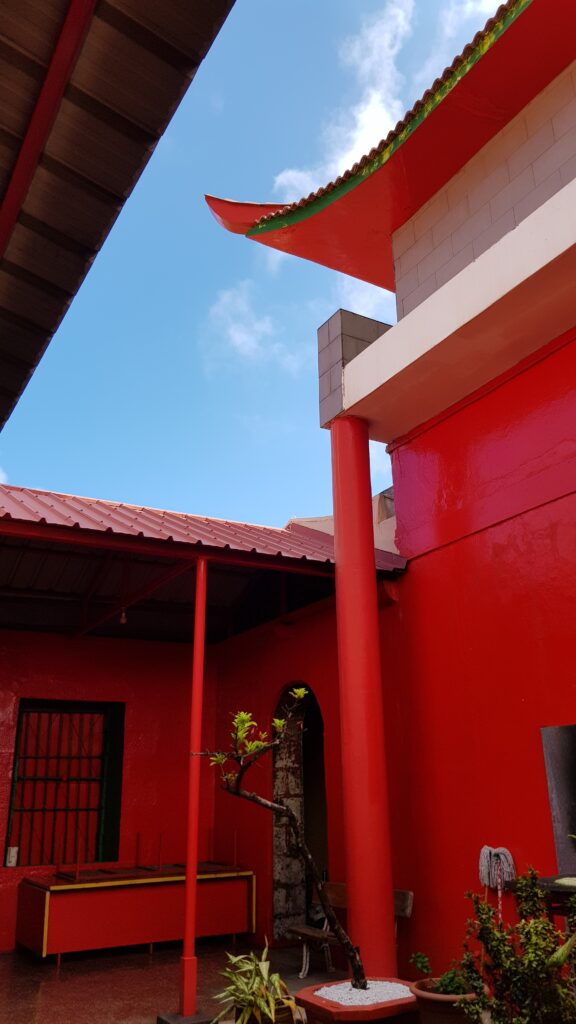

The Jummah Mosque
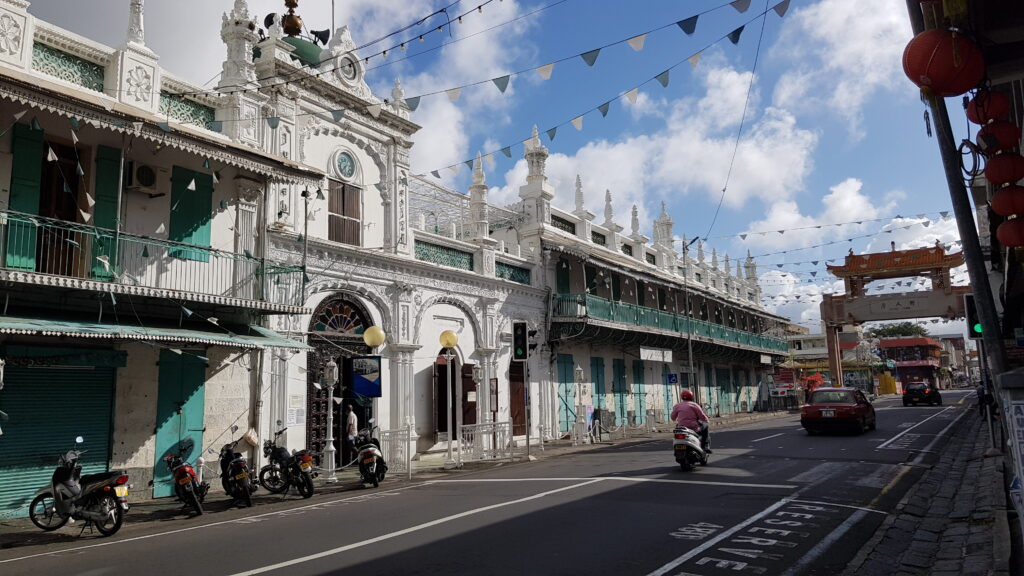
The Jummah Mosque is very famous amongst tourists and locals in Mauritius. What I really liked about this Mosque is that it’s located right next to the portal marking the entrance to Chinatown, and I find that it’s a beautiful example of cultural and religious diversity in Port-Louis and Mauritius in general.
The Mosque is very beautiful, when walking in you can really feel the peaceful atmosphere, again, away from the city noises. I was there very early in the morning on a Saturday and children just finished their classes and came out of the Mosque. Their teacher saw me getting inside and welcomed me very warmly. He explained the history of the Mosque and the history of the cultural and religious diversity of Mauritius. The teacher also showed me an innovative book version of the Koran where you could choose to listen to specific verses and their explanation amongst a wide range of languages, I didn’t know that this existed, so it was pretty impressing for me.
There are benches in the courtyard of the Mosque where you can sit down and reflect or just enjoy the beauty and calm of this building.
More information: www.jummahmasjid.org



The Shri Sockalingum Meenatchee Ammen Temple

– Also very famous amongst tourists and locals the Shri Sockalingum Meenatchee Ammen Temple is the most ancient Tamil temple in Mauritius (its construction started in 1854). The Temple honors the God Shiva.
“[…] one of the rare temples to be built according to the principles of Dravidian religious architecture governing the construction of places of worship. These precepts provide that the temple must also take the shape of a human body, with privileged places in the location of the heart and brain. It has several shrines dedicated to Hindu deities worshiped in Tamil Nadu.”
(Information sign at the entrance of the site)
The temple is located a bit outside of the center of Port-Louis and it’s surrounded by several buildings, probably hosting religious and cultural activities, as well as by a beautiful garden where you can observe peacocks walking around. When visiting, you can ask for a guide to explain the rich Tamil history and the importance of the Mauritian religious heritage. There are several benches inside and outside of the Temple where you can sit and enjoy the architecture as well as the peaceful atmosphere and fresh air circulating in the courtyard. When I visited this Temple, I was amazed by its size and by the beauty of the paintings that surely describe its history. [That’s why I would like to emphasize the fact that asking for a guide can be very helpful in understanding the spiritual importance of this Temple and its architecture].
More information: https://www.lemauricien.com/scope/sockalingum-meenatchee-ammen-kovil-lincontournable-kaylasson/325303/
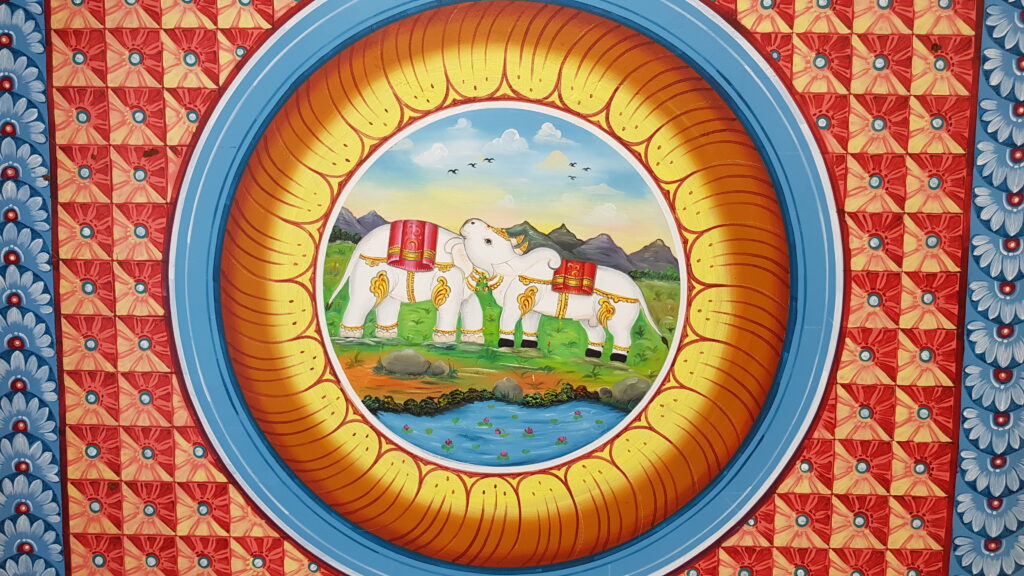

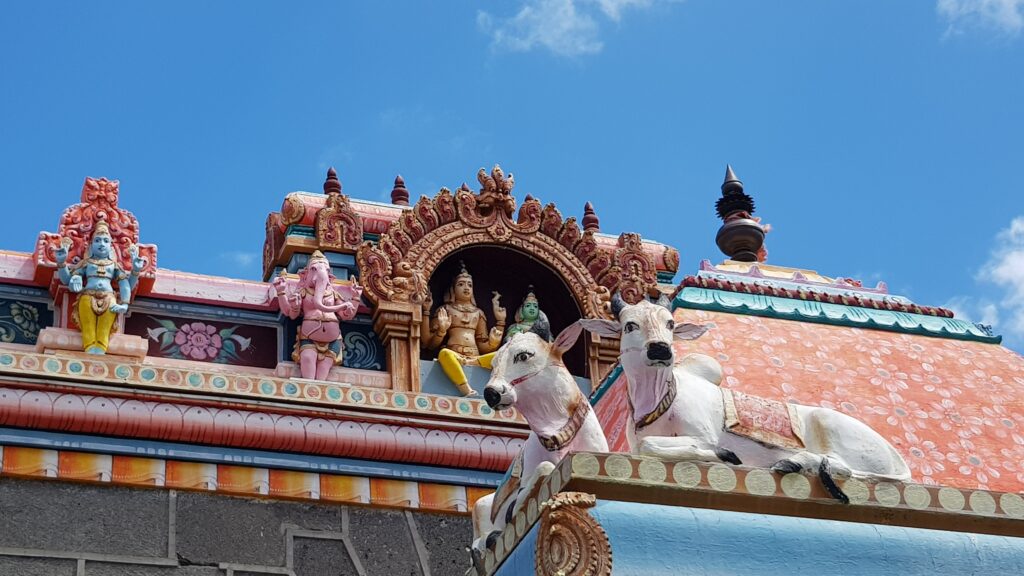
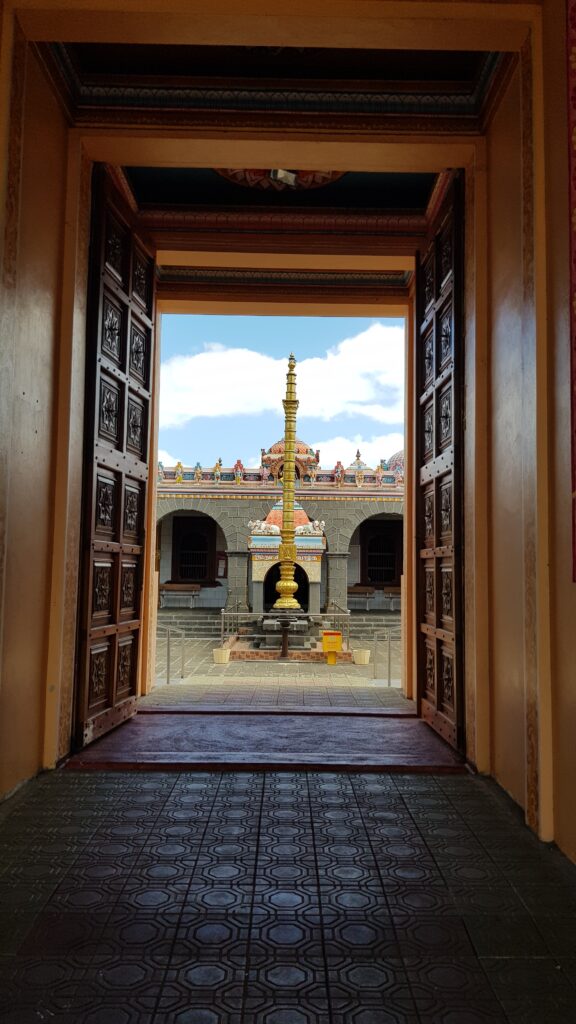

These three cultural and spiritual havens symbolize part of the rich diversity in Mauritius. It’s amazing to see how, while staying in the same city, you can be transported into different universes, religious beliefs, architectures. In my opinion, it’s the most beautiful thing you can witness in the world – cultural diversity and hybrid heritages -.
PS: Keep in mind that before being cultural havens, these places are places of worship and memory. Therefore, it’s important to remain discreet and ask for the rules applied in order to prevent any misunderstanding.
– Tasumbu





Your style is very unique compared to other people I have read stuff from. Many thanks for posting when you have the opportunity, Guess I will just book mark this web site.
thanks, interesting read
thanks, interesting read